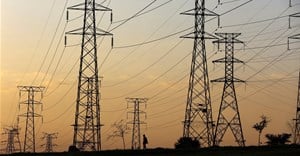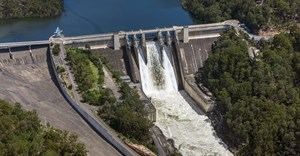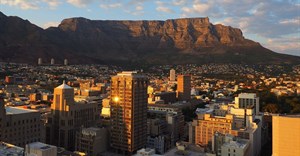Africa needs an attractive climate for investment in power sector

This is according to David Humphrey, global head of power and infrastructure at Standard Bank. "Africa's deficit in power generating capacity is well documented but what is not always realised is that unless this is addressed timeously, other crucial investment activities cannot be actioned.
African governments need to make every effort to create a conducive climate for attracting private sector investment into their respective power sector, as by themselves they do not have the financial resources necessary for the very high amount of capital expenditure required," Humphrey said.
Excluding South Africa, the entire installed generation capacity of sub-Saharan Africa is only 28 gigawatts, roughly equivalent to that of Argentina. The World Bank estimates that between $120bn and $160bn needs to be invested each year - over and above existing levels of expenditure - to bring energy access to everyone in sub-Saharan Africa by 2030.
Standard Bank is of the opinion that in order to facilitate greater investment from the private sector, governments on the continent need to address five key areas, namely:
- the development of an integrated power policy;
- creating an investment-friendly environment;
- executing a bankable independent power procurement programme;
- empowering a strong regulator; and
- development of a reliable regional distribution network.
"The development of an integrated power policy or plan is perhaps the most crucial aspect to kick start the electricity grid expansion," said Humphrey. "It's the old adage that if you fail to plan, you're essentially planning to fail."
Assess current capacity
The first step in developing a generating capacity plan is to assess a particular country's current installed capacity against its current theoretical or actual maximum demand. That will enable planners to determine the size of the over- or under-supply that prevails in a particular country. Only then can one begin using the country's economic growth trajectory, rate of population expansion and trends in power demand, as well as other variables, to determine the likely course of future power use in a country. That process will then enable policy makers to determine what available technologies are best able to meet a particular country's energy requirements.
A coherent power sector planning framework also needs a fundable plan in order to ensure that the procurement and contracting process is resourced with the appropriate skills and technologies. A workable tariff regime that is sufficiently cost reflective to make investment worthwhile, while at the same time acceptable to consumers, needs to be devised.
The fact that power tariffs can become politically charged also highlights the need for clear, consistent and fair regulatory oversight of the power sector. Average power tariffs in most parts of the developing world fall in the range of $0.04 to $0.08 per kilowatt-hour compared to $0.13 per kilowatt-hour in sub-Saharan Africa. In countries dependent on diesel-based systems, tariffs are higher still at over $0.20 per kilowatt-hour, and self-generation using portable generators can be double or three times that amount.
A strong, independent regulator that stands at arm's length from government, investors, consumers and the state-owned generating entity is a crucial component in any country's power generating capacity. Nevertheless, it can be a tricky balance to arrive at tariffs that are both acceptable to consumers while at the same time being sufficiently high to enable investment in the first place, shield a generator from exchange rate and fuel cost volatility (within reason), and also fairly reflect the cost of production, generation and distribution. An adequate and reliable distribution network, and the ability of new investors to access that network, is another key determinant of private sector power investment.
Key aspects
"The rule of law, a degree of labour flexibility, the ability to get money and skills in and out of a country and a credible regulatory environment are all key aspects in determining whether or not investors choose to deploy their capital in a particular country," says Mr Humphrey. "A country's fiscal, monetary and currency policy also exerts enormous influence on investment decisions."
Standard Bank is of the opinion that success in the power space is two way. African governments need to be cognisant of how to woo private sector investment, and then be brave in their implementation. IPPs themselves however also need to learn and be aware of the cultural and local factors that can influence the business environment and their ultimate success.
Innovative funding arrangements are one area where private sector investors can play an important role in helping to reduce the overall cost of an investment, thereby reducing their overall capital needs whilst at the same time making the tariff regime of a particular project more politically palatable.
"What Africa lacks in generating capacity it makes up for in potential," said Humphrey. "While that is of natural appeal to potential investors in the continent's burgeoning power sector, the onus remains on governments across sub-Saharan Africa to put in place the appropriate frameworks to encourage investment and translate their generating potential into increased electrification."
















